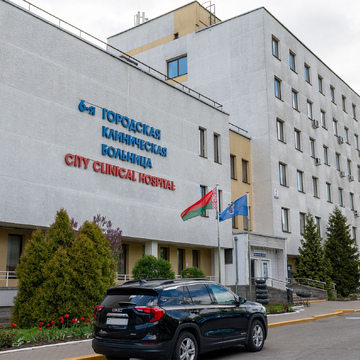
Atopic dermatitis is a chronic inflammatory skin disease that usually occurs in people with a genetic predisposition to allergic reactions. This type of dermatitis is common in children, but can persist into adulthood. The main symptoms are itching, dry skin, redness, and rashes that can appear in certain areas of the body: the face, neck, arms, legs, and skin folds.
Atopic dermatitis is often accompanied by other allergic diseases, such as asthma and allergic rhinitis. The disease is chronic, which means that there are alternating phases of exacerbation and remission, as well as seasonal influences - symptoms usually intensify in the cold season, when the air becomes dry.
Causes of atopic dermatitis
The exact cause of atopic dermatitis is not fully understood, but its development is associated with a combination of the following factors:
- Genetic predisposition. The presence of atopic dermatitis, allergies or asthma in parents increases the likelihood of the disease in the child.
- Impaired skin barrier function. People with atopic dermatitis often experience a loss of skin's ability to retain moisture, making the skin drier and more susceptible to irritants and infections.
- Immune disorders: In atopic dermatitis, there is increased activity of the immune system, which leads to hypersensitivity of the skin and its inflammation even with minimal exposure to allergens and other triggers.
- Environmental factors: Dust, animal hair, cold and dry air, tobacco smoke and other irritants can worsen the skin condition.
- Stress. Emotional stress often leads to an exacerbation of atopic dermatitis symptoms, as stress can increase inflammatory processes in the body.
Diagnosis of atopic dermatitis
The diagnosis of atopic dermatitis is based on clinical symptoms and family history. There is no specific test to confirm the diagnosis, but your doctor may order the following tests to rule out other conditions:
- Blood tests. Analysis of the level of total and specific IgE to detect allergies, as well as a general blood test to assess the inflammatory process.
- Allergy tests . To identify potential allergens that can cause exacerbations of atopic dermatitis.
- Patch tests are performed to rule out contact dermatitis.
Treatment of atopic dermatitis in children
In children, atopic dermatitis often manifests itself at an early age and requires a delicate approach. The treatment is based on the following principles:
- Use moisturizers after each water procedure.
- Use of light steroid or non-hormonal ointments during exacerbations.
- Antihistamines to reduce itching.
- Prevention of possible triggers, such as allergens, that may provoke flare-ups.
Prevention of exacerbations
- Regular skin moisturizing: Regular use of emollients helps keep the skin hydrated and reduces the likelihood of flare-ups.
- Avoiding sudden changes in temperature: Sudden changes in temperature and dry air can worsen the condition of the skin, so it is recommended to maintain an optimal level of humidity in the room.
- Daily use of hypoallergenic care products: It is important to avoid harsh products that can irritate the skin.
- Wearing soft clothing: Synthetics and wool can irritate the skin, so cotton clothing should be preferred, especially for children.
Treatment of atopic dermatitis requires a comprehensive approach, including medication, skin care, and lifestyle adjustments. Proper selection of therapy helps effectively control the symptoms of the disease, prevent exacerbations, and improve the quality of life of patients.



